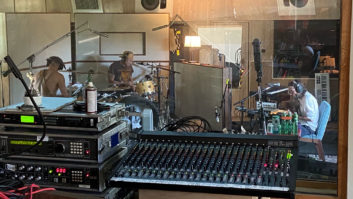
Mars (April 7, 2021)—When NASA’s Mars 2020 Perseverance rover landed on February 18, it was an exciting triumph; after all, it’s not every day that NASA sends something more than 134 million miles across space and has everything go to plan. Perseverance is there to collect rock and sediment samples for future return to Earth, search for signs of ancient microbial life, and more, but one of its first successes was to simply record and send back audio from the Red Planet for the first time.
NASA opted to use an off-the-shelf DPA d:dicate 4006 omnidirectional mic in tandem with an MMA-A digital audio interface and MMP-G modular active cable. The mic itself was stripped down to its bare essentials, said René Mørch, product manager, DPA Microphones, in order to reduce its weight as much as possible. “The microphone and the MMP-G are housed outside on the port side, while the MMA-A is safe in the rover itself so that it will not go through the outside temperature changes.”
There are other factors affecting the microphone’s recordings besides the temperature. Between the extreme temperatures and the thin, carbon dioxide-rich atmosphere, higher frequencies attenuate more quickly, and there’s also a lower speed of sound, roughly 540 mph versus a typical 760 mph on Earth.
Miking Up Mars
The 4006 mic was put on the rover to record audio of the descent, like friction from the atmosphere and dust thrown around by the craft’s thrusters, but there was no certainty that it would survive the trip. Ironically, the mic wasn’t able to collect sound from the landing, but has since captured and sent back audio from the planet’s surface. Those initial audio files were sent to DPA’s engineering team for processing, and then back to NASA for final analyzing and publishing.

If it seems surprising that NASA never recorded Mars before, it’s not for lack of trying. Some previous landers captured some wind noise via seismometers with minimal success, while other landers that had microphones either crashed or NASA opted to leave the mic off for fear of affecting the landing. Perseverance’s recordings, then, mark the first proper audio to be captured on Mars.
We can look forward to hearing more from Perseverance in the months to come, too, as its mission is just getting started. The rover will spend at least one Mars year—roughly two Earth years—exploring the landing site as it sends back data and the gusty, windy sounds of the Red Planet.
MARS 2020 Rover • https://mars.nasa.gov/mars2020
DPA Microphones • www.dpamicrophones.com






